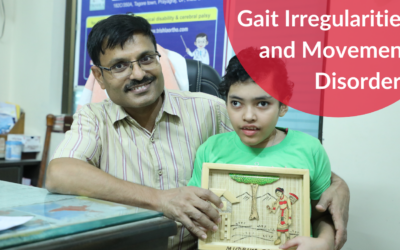Cerebral palsy in children is not at all very easy to manage. After all, it can entirely change their life. The medical condition will impact their motor skills, regular activities, and more. Now, there are different forms of cerebral palsy as well that can have a significant impact on how the child can lead his life. For instance, you will hear about spastic, diplegic, or ataxic cerebral palsy. But today, in this post, we will talk about hypotonic cerebral palsy, a developmental disorder that affects motor functions. Just like any other form of cerebral palsy, it is caused by brain damage before, during, or after childbirth.
In Hypotonic Cerebral Palsy tone in the body is too low so they cannot maintain posture and balance. Most of the time presentation can change into other varieties like athetoid/spastic variety. Outcomes are not satisfactory in persistent hypotonia. These children need good therapy, brace and supportive measures. In these children,n hypothyroidism should be ruled out.
Now, hypotonic cerebral palsy is one of the rarest forms, accounting for only 2.6% of all cases. So, moving on, let’s discuss this type of cerebral palsy in detail and know better about it.
What to know about hypotonic cerebral palsy?
As mentioned earlier, hypotonic cerebral palsy is quite a rare condition. It is generally characterized by low muscle tone, resulting in floppy muscles. This hypotonia can cause children to miss important developmental milestones like sitting up, rolling over, crawling, or even walking. Here, the floppy muscles do not lack strength, but instead, they lack stability.
Once your child is diagnosed with hypotonic cerebral palsy, they will start experiencing several neurological and physical impairments. Luckily, there are treatment options available that will help manage the symptoms better and ensure your child can lead a healthy and independent life.
Hypotonic cerebral palsy causes
When talking about hypotonic cerebral palsy, you must already be worried to know about the causes of the same. Well, cerebral palsy is most often caused by brain damage that happens during the birth process. Damage to different motor control centres of the developing brain can also cause different cerebral palsy types. This results in a variety of cerebral palsy symptoms.
The most common cause of cerebral palsy that leads to hypotonia is damage to the cerebellum. The cerebellum is responsible for receiving messages from the spinal cord and other brain areas to control motor movement. Any damage to this area can cause motor function and muscle tone abnormalities.
Now, here are the situations that can cause hypotonic palsy.
- Failure to detect or treat any infections in the mother.
- Any failure to detect foetal distress during labour, such as lack of oxygen.
- Failure to identify umbilical cord complications.
- Improper use of vacuum delivery or forceps.
- Failure to perform urgent C-section
Doctors are now trained to handle emergencies and even complicated childbirths. In case the healthcare professional who has delivered the child makes a careless medical mistake, then it can lead to your child having cerebral palsy. So, it may be considered medical malpractice.
Hypotonic cerebral palsy signs and symptom
Just like ataxic cerebral palsy, most cases of hypotonic cerebral palsy are not diagnosed until a few months or even years later in the child’s life. Hypotonic cerebral palsy symptoms can even go unnoticed, as the signs of cerebral palsy may be confused with other conditions associated with abnormal development. Now, here are specific symptoms that you need to look out for if you suspect your child has hypotonic cerebral palsy.
- Clumsiness
- Loose muscles
- Development delays
- Excessive muscle flexibility
- Poor balance and stability
- Lack of head control
- Flexible joints and ligaments
- Difficulty swallowing, chewing, or drooling
If you find your child has any of these symptoms and you think he might have hypotonic cerebral palsy, then you will be entitled to financial compensation. Ensure you visit the doctor to start treatment and plan what to do.
How to manage hypotonic cerebral palsy?
Keep in mind the symptoms of hypotonic cerebral palsy are extremely difficult to identify. They make it challenging for the children to control muscle movement. Luckily, there are treatment options such as Cerebral palsy therapy available that will help your child manage the condition better.
- Physical therapy
You must have already heard of the use of physical therapy for spastic diplegic cerebral palsy or ataxic cerebral palsy. After all, cp child physiotherapy helps a child regain stability and build strength, which is required for muscle movement. Now, this therapy can also be beneficial for hypotonic cerebral palsy. During the process, the therapist targets underused muscles and helps build an exercise regime to ensure the child gains better stability and coordination.
- Occupational therapy
You should know that cerebral palsy occupational therapy can be extremely beneficial for children suffering from hypotonic cerebral palsy. The therapist will help the child learn how to control fine motor skills, such as getting dressed, brushing their teeth, eating with utensils, etc.
- Speech therapy
Speech therapy can be extremely advantageous for cerebral palsy patients with poor muscle control. The therapist aims to strengthen the oral muscles, giving the children more freedom to feed themselves and better communication.
- Mobility aids
Mobility aids are known to help ensure that a child can move freely and independently. Children who have hypotonic cerebral palsy will benefit greatly from mobility aids such as braces, which help them to stablish joint and move with ease. Other mobility aids, such as scooters and wheelchairs, can also be used for children with severe movement impairment.
Conclusion
Now, once your child has been diagnosed with any form of cerebral palsy, you must get started with the treatment. However, this is extremely important in the case of ataxic cerebral palsy and hypotonic cerebral palsy. If you are looking for assistance, consider getting in touch with the Trishla Foundation. They have got skilled professionals who know how to handle the process. They will provide customized treatment options that work best for the child. No matter the severity of the condition or associated symptoms, the doctors will be able to provide the best medical assistance.







